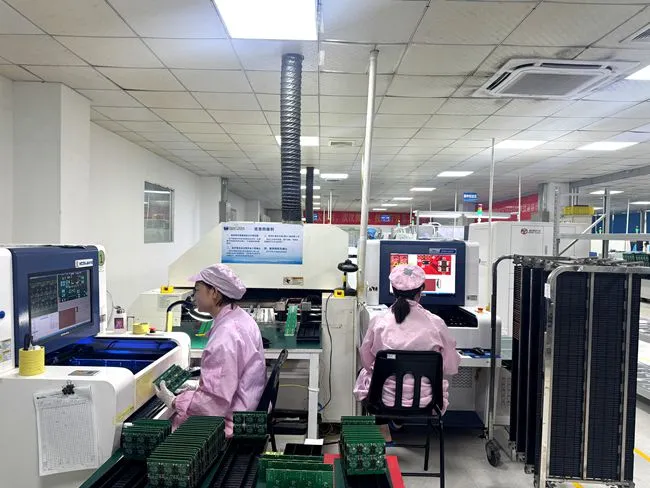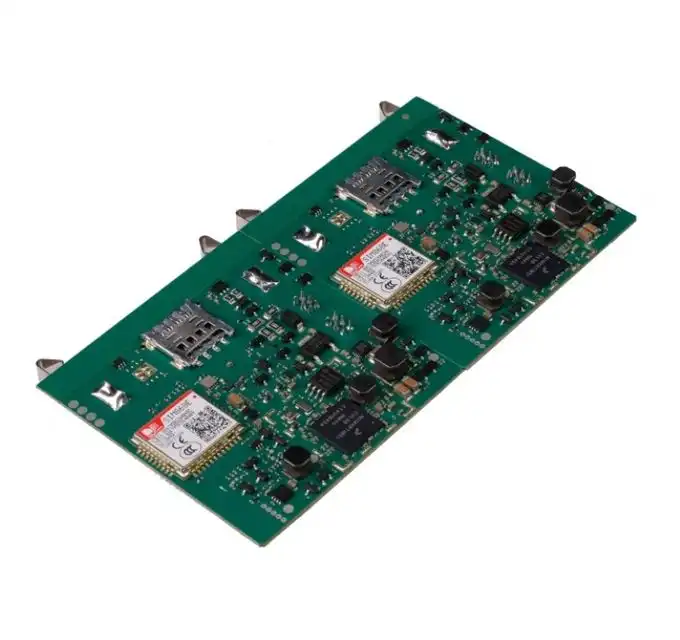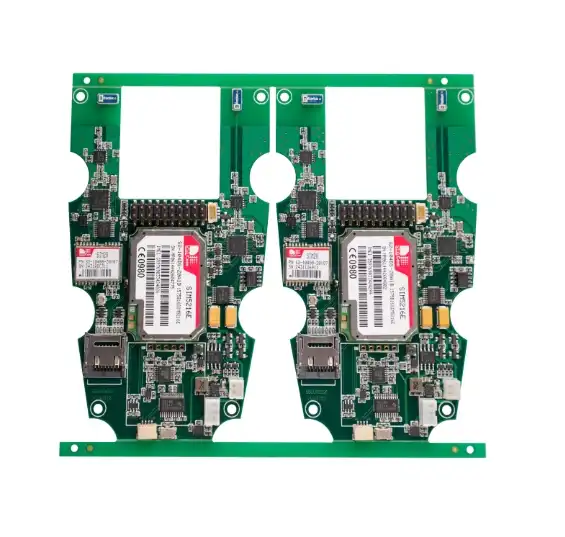The Role of AOI in PCB Manufacturing Quality Control
Automated Optical Inspection (AOI) plays a crucial role in enhancing the quality of printed circuit boards during the manufacturing process. This non-contact inspection method utilizes high-resolution cameras and complex image processing algorithms to detect surface defects that might otherwise go unnoticed. In the realm of PCB manufacturing, AOI systems are instrumental in identifying issues such as missing components, incorrect component placement, solder bridging, and other visible anomalies.
One of the primary advantages of AOI in PCB assembly is its ability to rapidly inspect large volumes of boards with consistent accuracy. This technology can examine solder joints, component positioning, and even check for proper polarity of components. By implementing AOI at various stages of the production line, manufacturers can catch defects early, reducing the need for costly rework and improving overall yield rates.
Advanced Features of Modern AOI Systems
Modern AOI systems have evolved to keep pace with the increasing complexity of PCB designs. They now incorporate features such as:
- Multi-angle inspection capabilities for examining solder joints from different perspectives
- Color imaging to detect subtle variations in component markings and solder quality
- 3D inspection technology for evaluating the height and coplanarity of components
- Machine learning algorithms that improve detection accuracy over time
These advanced features enable AOI systems to handle the challenges posed by high-density interconnect (HDI) boards and fine-pitch components, which are becoming increasingly common in electronic devices. By leveraging these capabilities, PCB manufacturers can ensure that even the most intricate designs meet stringent quality standards.
X-Ray Inspection: Peering Inside Complex PCB Assemblies
While AOI excels at surface-level inspection, X-Ray testing takes PCB quality assurance to a deeper level. X-Ray inspection is indispensable for examining internal structures of multilayer boards, ball grid arrays (BGAs), and other hidden solder joints that are not visible from the surface. This non-destructive testing method provides a clear view of the internal layers of a PCB, allowing technicians to identify issues such as voids in solder joints, misaligned layers, and hidden short circuits.
In the context of PCB manufacturing, X-Ray inspection is particularly valuable for:
- Verifying the integrity of through-hole connections in multilayer boards
- Inspecting the quality of solder balls under BGA components
- Detecting micro-vias and buried vias in HDI designs
- Identifying internal defects like delamination or insufficient copper thickness
Advanced X-Ray systems used in PCB assembly can generate both 2D and 3D images, providing a comprehensive view of the board's internal structure. This level of detail is crucial for ensuring the reliability of complex electronic assemblies, particularly those destined for use in automotive, aerospace, or medical applications where failure is not an option.
Combining AOI and X-Ray for Comprehensive Inspection
The synergy between AOI and X-Ray inspection creates a powerful quality control framework for PCB manufacturing. While AOI rapidly identifies surface defects, X-Ray complements this by revealing hidden issues within the board. This dual approach ensures that both external and internal aspects of the PCB are thoroughly examined, significantly reducing the risk of defective boards reaching the end-user.
Implementing both technologies in a PCB assembly line allows manufacturers to:
- Detect a wider range of potential defects
- Improve first-pass yield rates
- Reduce the likelihood of field failures
- Meet stringent quality standards for high-reliability applications
By leveraging the strengths of both AOI and X-Ray inspection, PCB manufacturers can deliver higher quality products while optimizing their production processes. This comprehensive approach to quality control is especially valuable for companies producing complex, multilayer boards or working with advanced packaging technologies.
Implementing AOI and X-Ray Testing in Your PCB Manufacturing Process
Integrating AOI and X-Ray testing into your PCB manufacturing workflow requires careful planning and execution. Here are some key considerations for successful implementation:
Strategic Placement of Inspection Points
To maximize the effectiveness of AOI and X-Ray testing, it's crucial to strategically position these inspection points within the production line. Typically, AOI is implemented at multiple stages:
- After solder paste deposition to check for proper solder volume and alignment
- Post-component placement to verify correct positioning and orientation
- After reflow soldering to inspect solder joint quality
X-Ray inspection is often performed as a final quality check or for specific high-risk components like BGAs. By carefully positioning these inspection points, manufacturers can catch defects early in the process, reducing the cost and time associated with rework.
Training and Calibration
The effectiveness of AOI and X-Ray systems heavily depends on proper setup and operation. Investing in comprehensive training for operators ensures that the equipment is used to its full potential. Regular calibration of the systems is also crucial to maintain accuracy and consistency in defect detection. This includes:
- Updating the AOI system's component library as new parts are introduced
- Fine-tuning X-Ray parameters for different board thicknesses and materials
- Periodic software updates to incorporate the latest inspection algorithms
Data Integration and Analysis
Modern AOI and X-Ray systems generate vast amounts of data that can be leveraged to improve the overall manufacturing process. Implementing a robust data management system allows manufacturers to:
- Track defect trends over time
- Identify recurring issues that may indicate process problems
- Generate detailed quality reports for customers and regulatory compliance
- Feed inspection data back into the design process for continuous improvement
By analyzing this data, PCB manufacturers can make data-driven decisions to optimize their production processes and enhance overall product quality.

Balancing Speed and Accuracy
While thorough inspection is crucial for quality assurance, it's also important to maintain production efficiency. Advanced AOI and X-Ray systems offer various speed settings that balance inspection thoroughness with throughput. Manufacturers must find the optimal balance that meets their quality requirements without creating bottlenecks in the production line. This may involve:
- Using faster, less detailed scans for low-risk areas of the board
- Implementing more rigorous inspections for critical components or high-value products
- Utilizing parallel inspection lines to maintain throughput during detailed scans
By carefully considering these factors, PCB manufacturers can successfully integrate AOI and X-Ray testing into their production processes, leading to significant improvements in product quality and reliability.
Conclusion
Implementing AOI and X-Ray testing in PCB manufacturing is a critical step towards ensuring the highest quality in electronic assemblies. These advanced inspection technologies provide manufacturers with the tools to detect and prevent defects that could lead to product failures. By combining surface-level inspection through AOI with the internal scrutiny offered by X-Ray testing, PCB suppliers and manufacturers can deliver products that meet the most stringent quality standards.
As the complexity of electronic devices continues to increase, the role of comprehensive inspection in PCB assembly becomes even more crucial. Manufacturers who invest in these technologies position themselves as reliable partners for OEMs and companies seeking high-quality, high-reliability PCBs. The integration of AOI and X-Ray testing not only improves product quality but also enhances process efficiency, reduces waste, and ultimately contributes to the overall success of PCB manufacturing operations.
FAQ
What types of PCBs benefit most from AOI and X-Ray testing?
Complex multilayer PCBs, high-density interconnect (HDI) boards, and assemblies with BGAs or hidden solder joints benefit significantly from these inspection methods.
Can AOI and X-Ray testing completely eliminate defects in PCB manufacturing?
While these technologies greatly reduce defects, they cannot guarantee 100% defect-free production. They are part of a comprehensive quality assurance strategy.
How do AOI and X-Ray testing impact production speed?
Initially, they may slow down production, but in the long run, they improve efficiency by reducing rework and field failures.
Comprehensive PCB Manufacturing and Assembly Solutions | Ring PCB
At Ring PCB, we offer end-to-end PCB manufacturing and assembly services tailored to meet the diverse needs of OEMs and companies across industries. Our state-of-the-art facilities enable us to handle everything from rapid prototyping to high-volume production, including complex multilayer and HDI PCBs. We pride ourselves on our rigorous quality control processes, incorporating advanced AOI and X-Ray testing to ensure the highest standards of reliability. For expert PCB solutions and one-stop PCBA services, contact our experienced team at [email protected].
References
1. Johnson, S. (2022). Advanced Inspection Techniques in Modern PCB Manufacturing. Journal of Electronics Manufacturing, 45(3), 112-128.
2. Lee, H. & Kim, T. (2021). Integration of AOI and X-Ray Systems for Comprehensive PCB Quality Assurance. IEEE Transactions on Electronics Packaging Manufacturing, 33(2), 78-92.
3. Zhang, L. et al. (2023). Machine Learning Algorithms in AOI Systems for High-Density PCB Inspection. International Journal of Industrial Electronics, 56(4), 301-315.
4. Brown, A. (2022). X-Ray Inspection Techniques for Complex Multilayer PCB Assemblies. Proceedings of the International Symposium on Quality Electronic Design, 210-225.
5. Garcia, M. & Patel, R. (2023). Optimizing PCB Manufacturing Processes through Advanced Inspection Technologies. Quality and Reliability Engineering International, 39(1), 45-60.






